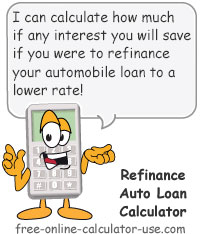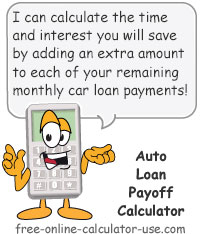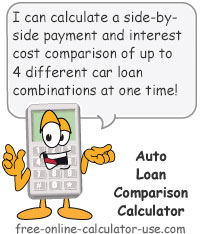IMPORTANT: Numeric entry fields must not contain dollar signs, percent signs, commas, spaces, etc. (only digits 0-9 and decimal points are allowed).
Click the Terms tab above for a more detailed description of each entry.
Step #1:
Enter the original amount borrowed (principal).
Step #2:
Enter the original number of monthly payments.
Step #3:
Enter the original or current payment amount.
Step #4:
Enter the number of payments you have already made.
Step #5:
Enter the refinance annual interest rate.
Step #6:
Enter the refinance term in number of months.
Step #7:
Enter any refinancing fees you will be charged by the lender, and indicate whether or not you want to roll the fees into the new loan principal.
Step #8:
If you need to borrow additional cash as part of the refinancing, enter the cash amount.
Step #9:
Tap the "Calculate Auto Refinance" button. This will populate the refinance comparison chart and display a bar chart comparing the interest costs of the both scenarios.





Follow me on any of the social media sites below and be among the first to get a sneak peek at the newest and coolest calculators that are being added or updated each month.